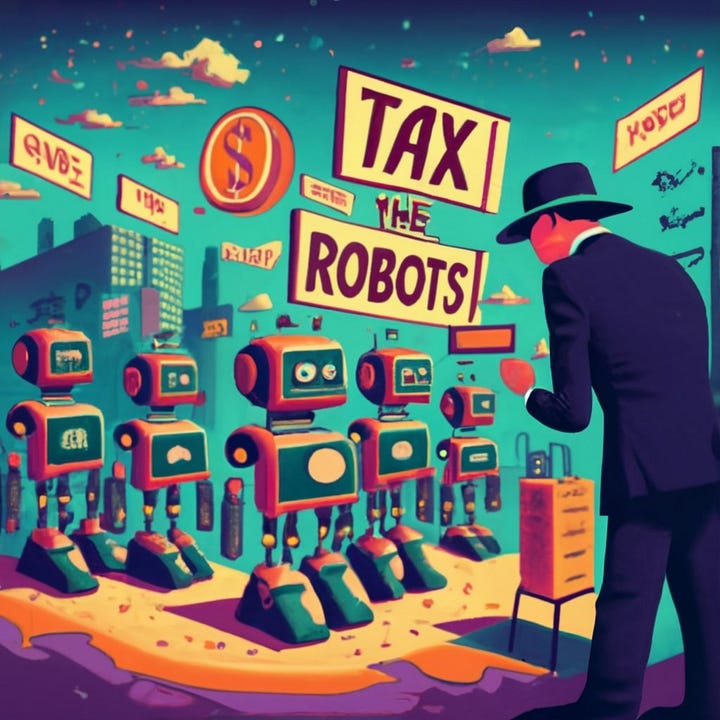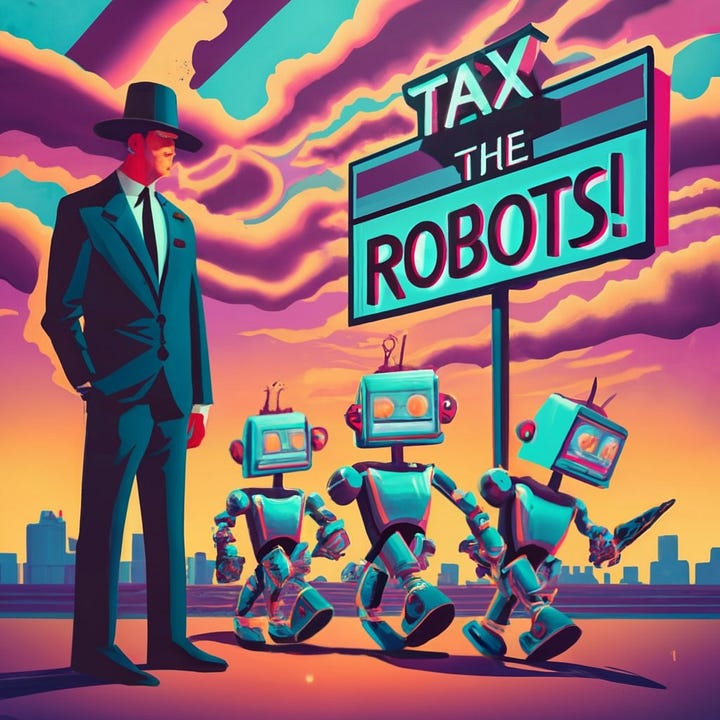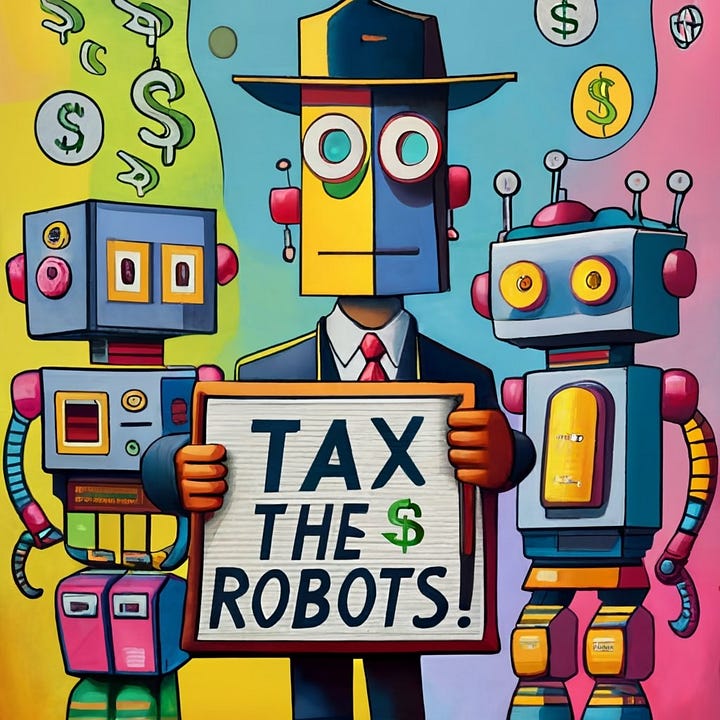How unions like the Teamsters and policymakers aren't seeing the forest through the trees on #AI
Artificial Intelligence is already displacing workers, and it is likely to accelerate—not slow down—unless unions and policymakers rethink their approach.




QUICK FACTS:
The name Teamster comes from "person who drives a team of horses." Yet, most freight today is not moved over land by horses, but by trucks.
The term Luddite comes from “a group of early 19th century English workmen destroying laborsaving machinery as a protest” and is now used to describe “one who is opposed to especially technological change.”
Generative Artificial Intelligence is already displacing workers, and it is likely to accelerate—not slow down—unless unions and policymakers rethink their approach.
There is no stopping AI.
“If Big Tech has its way, robots will take over jobs altogether,” the International Brotherhood of Teamsters exclaimed on LinkedIn on Wednesday. “The Teamsters aren’t having it.”
“The Teamsters are fighting like hell, and standing up to the billionaire techies who want to destroy jobs and the American middle class.” the union stated.
The union’s post was in reference to an article in the Washington Post about Chipotle experimenting with robots to make salads and burrito bowls.
The Teamsters have every right to be angry.
One of the most pro-union governors in the nation, California’s Governor Gavin Newsom, just went against the Teamsters by vetoing a bill requiring human operators in all commercial vehicles over 10,000 pounds.
However, for a number of reasons—history being one of them—the effort to stop innovation like automation and artificial intelligence is likely doomed to fail.
Like it or not, the Fourth Industrial Revolution is upon us. Despite calls earlier this year to put a pause on the development of artificial intelligence, there is little evidence that will happen.
Generative AI is currently in its embryonic stage and, while there are many predictions about the good or ill it will bring about to humanity, one thing seems certain: AI and its application to work will likely displace millions of workers’ jobs—whether they be truck drivers, or fast-food workers.
Replacing high-income jobs with AI poses an existential threat to society
As the “top 50 percent of all taxpayers paid 97.7 percent of all federal individual income taxes, while the bottom 50 percent paid the remaining 2.3 percent,”. according to the Tax Foundation, the seemingly unasked question about AI’s impact is: How will governments dependent on taxes function if higher income jobs are displaced?
While certain jobs, like fast-food jobs and, even higher-paying truck driver jobs are likely to be negatively impacted by AI and automation, perhaps more devastating is the potential for AI to replace even higher-paying jobs—at least from a tax policy standpoint.
“What are you going to do if all of your programmers now [perform] 30% more efficient?” Mehran Sahami, computer science professor and chair at Stanford University asked recently. “Do you hire the same number [of employees] and have 30% more products, more features? Or do you hire 30% less programmers? That question is not yet fully answered by the folks who are making the decisions.”
If journalists’ median salary in the U.S. is around $56K for (on the high end) 10 stories per week, (or even 12 stories per week) notwithstanding the currently-questionable quality of AI’s work product, NewsCorp in Australia has likely already replaced journalists with AI. And, that kind of displacement may be just around the corner in the United States as well.
For attorneys, while AI may not replace all lawyers, AI bots like Harvey “might be able to replace some of the work some entry-level lawyers do,” noted Fortune.com earlier this year. So, if an average salary range of a law associate is, according to Glassdoor, between $65K and $111K and fewer “entry-level lawyers” are needed due to AI, there will be fewer needed. And, of course, if there are fewer entry-level lawyers needed, that means there would likely be fewer law professors—where the median salary is around $184K—needed.
Although, after a four-month strike, Hollywood writers seemingly addressed the impact of AI on their jobs—and actors are still on strike—contracts are temporary. In the writers’ case, the recently-signed contract expires in 2026 and AI is still in its infancy. In 2026, AI may cause a whole new battleground.
While the problem of AI displacing whole swaths of jobs is very real, the productivity improvements as well as the fact that many of these jobs are considered ‘higher income’ poses a larger problem with how governments will fund basic infrastructure and entitlements without the taxes from those who pay the bulk of the taxes.
Efforts to minimize AI effects are barely scratching the surface
Right now, federal and state legislators seem to be focusing their attention on AI-related issues like privacy and workplace monitoring.
While important, those particular issues don’t address a more looming and fundamental question that few (if any) seem to be asking: What happens when there are not enough higher-paying jobs to fund governments?
While unions like the Teamsters are wholly within their right to be vocal and angry at not being able to stop progress, it might be more helpful to place that anger and their efforts to greater use by focusing on tax policy.
If, for example, they were to use their lobbying powers—especially in California—to push for a tax on AI’s uses to displace truck drivers or fast-food workers to help mitigate the costs of displaced workers, it would be a start.
Further, if they were successful in getting an “AI Tax” implemented and were it to be high enough, although it wouldn’t stop the development of AI, it could slow displacement down long enough to make for a more orderly transition.
Stopping the Fourth Industrial Revolution will, like the three prior ones, be impossible to stop.
However, rather than thinking or behaving like Luddites, perhaps a more holistic approach will help ease the pain of this one.



